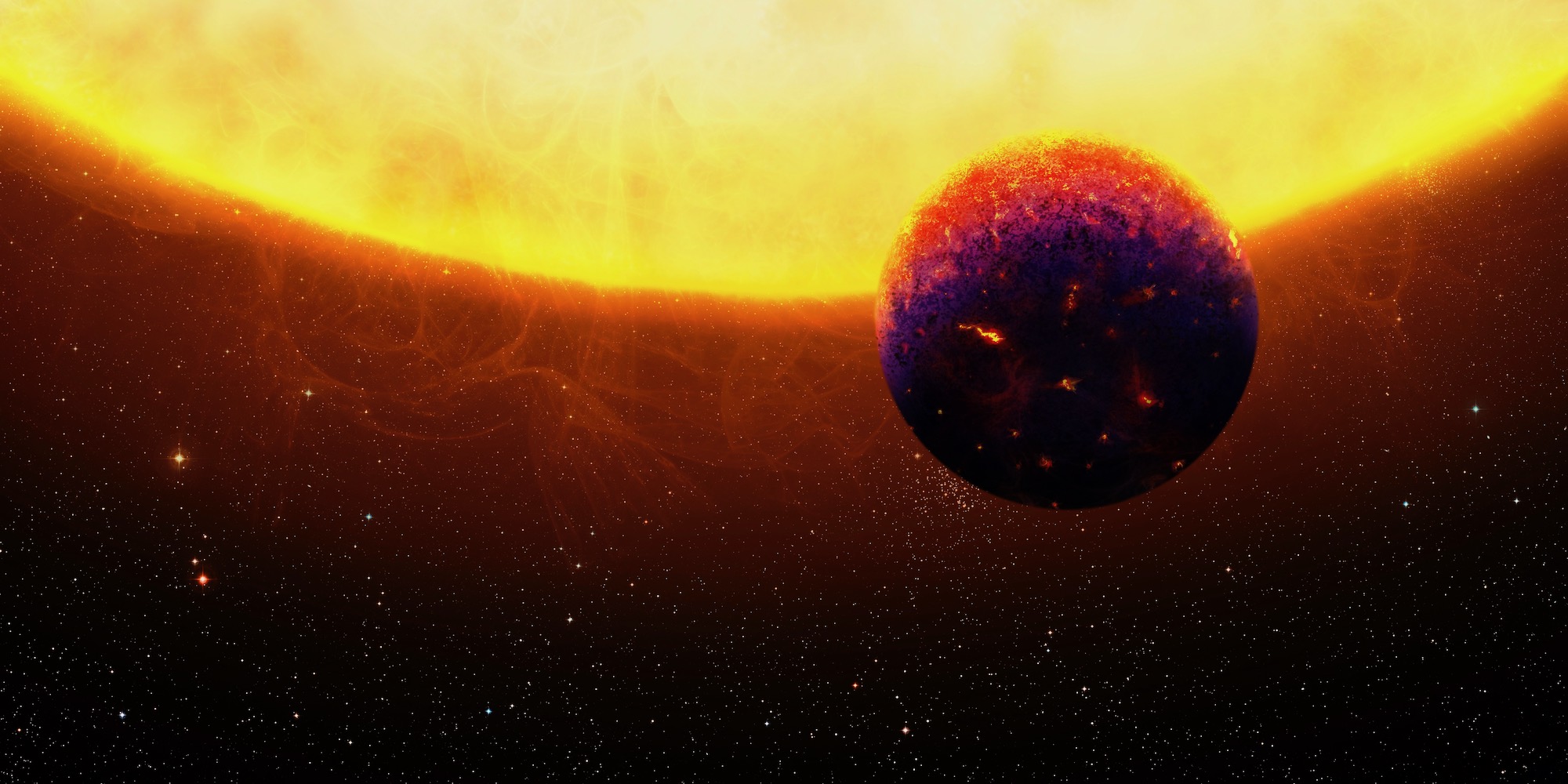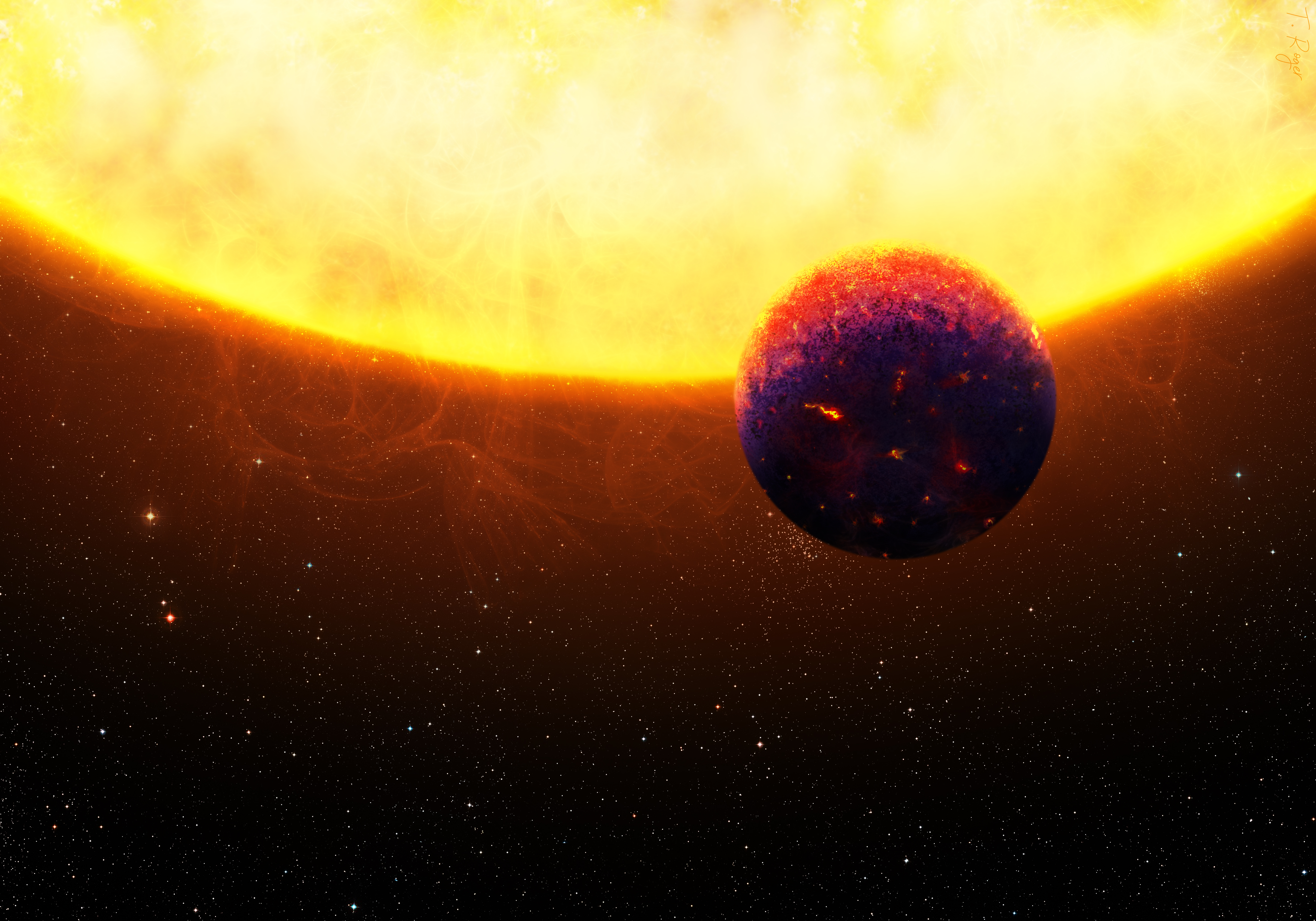Current highlights of PlanetS research

Astronomers have discovered a large number of rocky planets outside our solar system. Among them there are many exotic objects which we do not know in our solar system: Super-Earths, some of them even rich in gems, or water worlds with a global ice layer on the ocean floor. But what does it take to create a truly Earth-like planet? NCCR researchers are using computer models to investigate the formation and evolution of planets and have recently published interesting new findings.

Illustration of one of the exotic super-Earth candidates, 55 Cnc e, that are rich in sapphires and rubies and might shimmer in blue and red colors. (Illustration: Thibaut Roger)
Recently, an international team including PlanetS researchers discovered the third closest exoplanet. It orbits the star named Gl411 eight light years from our solar system and has at least three times the Earth’s mass (http://nccr-planets.ch/blog/2019/02/25/an-elder-sister-of-the-earth-in-a-nearby-system/). Rocky planets with three to ten times the mass of Earth are common in our galaxy as observations suggest, even there is no such Super-Earth in our solar system. Here, the rocky planets Mercury, Venus, Earth and Mars, which are all relatively small, are followed by the gas giants Jupiter, Saturn, Uranus and Neptune. Caroline Dorn, associate of PlanetS at the Institute for Computational Science of the University of Zurich, creates the rocky planets in the computer and has recently discovered a new, exotic class of Super-Earths.
If a planet forms at high temperatures close to its mother star, it may not contain a massive iron core like Earth, but a lot of aluminium oxide. Sapphires and rubies are made of aluminium oxide. So, is there a gigantic gemstone deposit sparkling out there? “A planet-sized sparkling gemstone: no, but exotic worlds rich in these gemstone: possibly yes,” says Dorn. Among the observed Super-Earths she has already found three candidates, that actually could have formed like the computer simulated, one of them is named 55 Cancri e. (http://nccr-planets.ch/blog/2018/12/19/sapphires-and-rubies-in-the-sky/)
However, nobody would like to spend time there in the glowing heat so close to a star. But how about rocky planets in safer distance to their host star with masses comparable to Earth? Astronomers are convinced that they exist in huge numbers. But many could be water worlds covered by a deep global ocean. While liquid water is generally thought to be an essential ingredient for life as we know it, too much of a good thing may be bad. “If the Earth contained about ten times more water, the pressure on the ocean floor would be so high that a high-pressure form of water ice would form there,” explains Christoph Mordasini professor of astrophysics at the University of Bern. That means bad prospects for habitability.
Are we alone?
“We have now asked ourselves why the Earth obviously contains just the right amount of water for the development of life,” says Mordasini. The answer is likely associated with a radioactive element: Aluminium-26 (Al-26). “It was delivered from one or several massive stars in the neighborhood of the young sun,” explains Tim Lichtenberg, postdoctoral fellow at the University of Oxford and former member of PlanetS. During its radioactive decay, Al-26 heated and dried the original planetary building blocks from the inside.
Lichtenberg used computer simulations to calculate how much the planetary building blocks dry out depending on the Al-26 content. Mordasini and his team then used the so-called “Bern Model” to investigate what kind of planets are ultimately formed from these building blocks. Result: Planets with the “right” amount of water like Earth only form if they started with an amount of Al-26 that is comparable to the one present in the early solar system. Planets born without Al-26 end up as water worlds. (http://nccr-planets.ch/blog/2019/02/11/better-to-dry-a-rocky-planet-before-use/)
“This study is an important step towards understanding why our Earth has the properties that make it so ideal for the origins and preservation of complex life,” says Mordasini: “Ultimately, it is about better understanding our place in the Universe: Are we humans the only ones who ask ourselves such questions, or does intelligent life exist somewhere else in the Universe?
Categories: External Newsletter, Uncategorized
